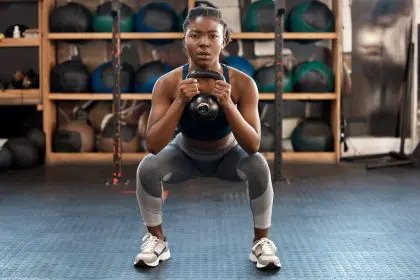The secret to transforming mediocre workouts into extraordinary fitness sessions lies not in expensive equipment or complicated routines, but in mastering something everyone does automatically thousands of times each day. This revolutionary approach to breathing during exercise has helped countless individuals achieve results that seemed impossible with traditional workout methods, proving that sometimes the most powerful tools are hidden in plain sight.
Most people drastically underestimate the impact proper breathing can have on exercise performance, fat burning, and overall fitness results. The standard approach of breathing whenever it feels natural during workouts actually limits oxygen delivery to muscles, reduces endurance capacity, and prevents the body from accessing its full potential for transformation. Understanding and implementing strategic breathing patterns can literally double the effectiveness of any workout routine within just a few weeks.
The transformation occurs through multiple physiological mechanisms that work together to create a compound effect on exercise performance. When breathing is properly synchronized with movement patterns, the body experiences enhanced oxygen utilization, improved core stability, increased caloric burn, and accelerated recovery between exercises. These combined benefits create a multiplier effect that makes every minute of exercise significantly more productive than conventional workout approaches.
The science behind breathing and exercise performance
The human body operates as an intricate system where breathing serves as the foundation for all physical performance. During exercise, muscles require dramatically increased amounts of oxygen to fuel contractions and generate power. Traditional breathing patterns often fail to meet these heightened demands, creating an oxygen debt that limits performance and reduces the overall effectiveness of workout sessions.
When breathing becomes shallow or erratic during exercise, the body cannot efficiently remove carbon dioxide while simultaneously delivering fresh oxygen to working muscles. This creates a cascade of limiting factors that prevent individuals from reaching their true exercise potential. Heart rate increases unnecessarily, perceived exertion rises beyond optimal levels, and fatigue sets in much earlier than it should with proper breathing techniques.
The revolutionary breathing approach works by establishing a rhythmic pattern that maximizes oxygen intake while ensuring complete carbon dioxide elimination. This creates an optimal internal environment where muscles can perform at peak capacity for extended periods. The technique also activates the parasympathetic nervous system during brief recovery moments, allowing for faster regeneration between exercise sets.
Understanding the power breathing technique
The foundation of this transformative breathing method centers on establishing a specific rhythm that coordinates with exercise movements while maintaining consistent deep diaphragmatic breathing throughout the entire workout session. Unlike shallow chest breathing that most people default to during physical exertion, this technique engages the entire respiratory system to create maximum oxygen exchange efficiency.
The technique begins with establishing proper posture that allows for full lung expansion. The shoulders remain relaxed and pulled slightly back, creating space for the ribcage to expand naturally. The core muscles engage lightly to provide stability while allowing the diaphragm to move freely through its full range of motion. This positioning creates the optimal foundation for implementing the breathing pattern.
The actual breathing rhythm follows a specific pattern that synchronizes with exercise movements while maintaining consistent depth and control. During strength training exercises, the breathing pattern coordinates with the lifting and lowering phases of each repetition. For cardiovascular activities, the rhythm establishes a steady pace that supports sustained performance while preventing the onset of premature fatigue.
Implementing the technique during strength training
Strength training provides the perfect opportunity to master this breathing technique because the controlled nature of resistance exercises allows for precise coordination between breathing patterns and movement phases. The technique transforms ordinary strength training sessions into highly efficient fat-burning and muscle-building workouts that produce results in significantly less time.
During the lifting or concentric phase of any strength exercise, focus on controlled exhalation that begins before the movement starts and continues throughout the entire range of motion. This exhale should be steady and controlled, not forced or rushed. The timing creates internal pressure that stabilizes the core while providing power for the lifting motion. This coordination dramatically increases the effectiveness of each repetition while reducing the risk of injury.
The lowering or eccentric phase requires a different breathing approach that maximizes muscle engagement and promotes recovery preparation. Begin a slow, deep inhalation as the weight begins its descent, continuing the breath throughout the entire lowering motion. This breathing pattern helps control the descent speed while preparing the muscles for the next repetition. The oxygen intake during this phase also supports immediate recovery and maintains peak performance throughout the entire set.
Between sets, implement a specific recovery breathing pattern that accelerates the restoration process while preparing the body for the next exercise. Take three deep breaths using a 4-second inhale, 2-second hold, and 6-second exhale pattern. This approach activates recovery mechanisms while maintaining the elevated metabolic state that promotes continued fat burning throughout the workout session.
Maximizing cardiovascular exercise effectiveness
Cardiovascular exercises benefit tremendously from proper breathing technique implementation, with many individuals experiencing doubled endurance capacity within just two to three weeks of consistent practice. The key lies in establishing a sustainable rhythm that supports extended performance while maintaining the intensity necessary for optimal cardiovascular and fat-burning benefits.
For moderate-intensity cardio activities like brisk walking, jogging, or cycling, establish a breathing pattern that coordinates with movement rhythm. A common effective pattern involves taking two steps or pedal strokes during each inhale and two steps or strokes during each exhale. This 2:2 ratio provides adequate oxygen delivery while maintaining a sustainable pace that can be continued for extended periods.
Higher-intensity cardio sessions require a modified approach that accounts for the increased oxygen demands while preventing the rapid onset of fatigue that typically limits high-intensity exercise duration. Shift to a 1:1 breathing ratio where each step or movement corresponds to either an inhale or exhale. This faster breathing rate ensures adequate oxygen delivery while the rhythmic pattern prevents the chaotic breathing that usually accompanies intense exercise.
During interval training sessions, use the breathing technique to maximize both the high-intensity work periods and the recovery intervals. During work periods, maintain the 1:1 ratio while focusing on deep, complete breaths rather than rapid shallow breathing. During recovery intervals, immediately shift to the 4:2:6 recovery breathing pattern to accelerate the restoration process and prepare for the next high-intensity interval.
Core activation and stability benefits
One of the most significant advantages of proper breathing technique implementation involves the automatic core activation that occurs when breathing patterns are correctly coordinated with exercise movements. This core engagement provides stability that improves exercise form while simultaneously strengthening the deep abdominal muscles that are crucial for overall fitness and appearance.
The diaphragmatic breathing required for this technique creates internal pressure that naturally engages the transverse abdominis, the deep core muscle responsible for spinal stability and the appearance of a flat, toned midsection. This muscle activation occurs automatically with proper breathing, essentially providing a core workout during every exercise session without requiring additional dedicated core exercise time.
The stability provided by proper breathing technique also allows for better form during all exercises, which translates to improved results and reduced injury risk. When the core is properly engaged through breathing, other muscles can focus entirely on generating power and movement rather than compensation for instability. This improved efficiency means every repetition produces maximum results.
Fat burning acceleration through enhanced oxygen utilization
The metabolic benefits of proper breathing technique extend far beyond improved exercise performance, creating conditions that dramatically accelerate fat burning both during and after workout sessions. Enhanced oxygen delivery allows the body to more efficiently utilize stored fat as fuel, while improved carbon dioxide elimination prevents the metabolic acidosis that typically limits fat oxidation during exercise.
When muscles receive adequate oxygen through proper breathing, they can continue using fat as a primary fuel source even during moderately intense exercise. Traditional breathing patterns often create oxygen debt that forces the body to rely more heavily on glycogen stores, limiting fat burning potential. The breathing technique maintains optimal oxygen levels that support continued fat utilization throughout the entire workout session.
The technique also promotes excess post-exercise oxygen consumption, commonly known as the afterburn effect, where the body continues burning calories at an elevated rate for hours after the workout ends. Proper breathing during exercise creates the physiological conditions that maximize this effect, essentially extending the fat-burning benefits of each workout session well into the recovery period.
Recovery enhancement and workout frequency optimization
Implementing proper breathing technique dramatically improves recovery between exercises, between sets, and between workout sessions. This enhanced recovery capacity allows for more frequent training sessions while reducing the risk of overtraining or burnout. The result is accelerated progress toward fitness goals through increased training volume and consistency.
During workout sessions, the breathing technique provides immediate recovery benefits that allow for maintained performance throughout the entire session. Traditional breathing patterns often lead to declining performance as the workout progresses, but proper breathing maintains peak capacity from the first exercise to the last. This sustained performance means every minute of the workout contributes maximally to fitness improvements.
Post-workout recovery is also significantly enhanced through continued implementation of the breathing technique during the cool-down period. Spending five to ten minutes performing gentle movement while maintaining the controlled breathing pattern helps clear metabolic waste products while promoting the recovery processes that lead to fitness improvements. This enhanced recovery allows for more frequent workout sessions and faster progress toward fitness goals.
Mental focus and mind-muscle connection benefits
The concentration required to maintain proper breathing rhythm during exercise creates an enhanced mind-muscle connection that significantly improves exercise effectiveness. This focused attention ensures that target muscles are properly engaged during each exercise while preventing the mental wandering that often reduces workout quality and results.
The rhythmic nature of coordinated breathing also creates a meditative quality that reduces perceived exertion while increasing exercise enjoyment. Many individuals find that workouts feel easier and more pleasant when proper breathing technique is implemented, leading to improved consistency and long-term adherence to fitness routines.
The mental discipline developed through breathing technique mastery also transfers to other aspects of fitness and health, including nutrition choices, sleep quality, and stress management. This holistic improvement in health-related behaviors compounds the direct benefits of enhanced exercise performance, creating comprehensive lifestyle changes that support long-term fitness success.
Implementation timeline and realistic expectations
Most individuals begin experiencing noticeable improvements in exercise performance within the first week of implementing proper breathing technique, with significant results becoming apparent within two to three weeks of consistent practice. The initial learning period requires conscious attention to breathing patterns, but the technique becomes automatic with regular practice.
Week one typically involves learning the basic breathing patterns while maintaining reduced exercise intensity to focus on technique mastery. Week two allows for gradual intensity increases as breathing coordination improves. By week three, most individuals can maintain proper breathing technique at full exercise intensity while experiencing the doubled effectiveness that makes this approach so transformative.
The key to success lies in consistent practice and patience during the initial learning period. Like any new skill, breathing technique mastery requires dedicated attention and practice. However, the dramatic improvements in exercise effectiveness and results make the initial investment in learning completely worthwhile for anyone serious about maximizing their fitness potential through this simple but powerful approach.

















